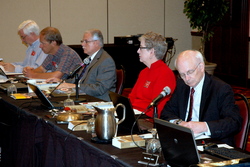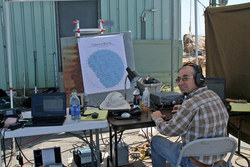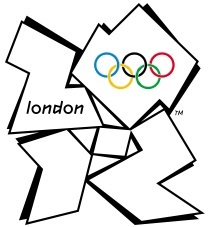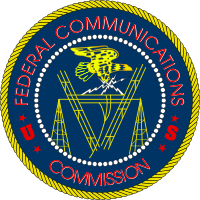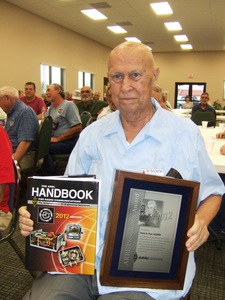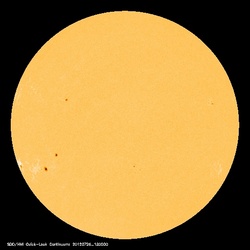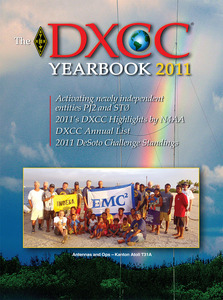 July 26, 2012 John E. Ross, KD8IDJ, Editor
| ||||||||||
+ Available on ARRL Audio News. + ARRL Board Plans for 2014 Centennial Celebration at 2012 Second Meeting
When the ARRL Board of Directors met for its 2012 Second Meeting July 20-21 in Windsor, Connecticut, it did so with a full agenda. Besides hearing and approving recommendations from its two standing committees -- the Administration and Finance Committee and the Programs and Services Committee -- the Board voted to hold the 2014 ARRL National Convention July 17-20 in Hartford, Connecticut, the birthplace of the League in 1914. Read more here. + ARRL Board of Directors Names Award Recipients at 2012 Second Meeting
The ARRL Board of Directors named four ARRL award recipients at their July 20-21 meeting in Windsor, Connecticut: the 2011 Doug DeMaw, W1FB, Technical Excellence Award; the 2012 ARRL Technical Innovation Award; the 2012 Philip J. McGan Memorial Silver Antenna Award, and the 2012 Herb S. Brier Instructor of the Year Award. In addition, the Board named former ARRL West Gulf Division Director Thomas W. Comstock, N5TC, as Director Emeritus of the ARRL. Read more here. + End of an Era: Heathkit Declares Bankruptcy, Closes for Good (Again)
The July 19 edition of The Herald-Palladium -- a newspaper serving the communities of Benton Harbor and St Joseph, Michigan -- is reporting that Heathkit Education Company has declared bankruptcy and has officially closed its doors after defaulting on its lease. According to the paper, Heathkit employed more than 1800 people in its heyday after World War II. When it finally closed, its workforce totaled fewer than six people. This is the second time since 1992 that Heathkit Educational Services has shuttered its doors. In August 2011, Heathkit announced it was returning to the kit building business, and in September, that it would once again be manufacturing Amateur Radio kits. Read more here. On the Air: The Bands Heat Up for the 2012 ARRL August UHF Contest
VHF/UHF weak-signal operators across North America are making final tests on their stations in preparation for the ARRL August UHF Contest, which is coming up over the weekend of August 4-5. According to ARRL Contest Branch Manager Sean Kutzko, KX9X, this contest will focus on 222 MHz and above. There will be lots of activity, and hopefully lots of propagation, too! "With much of the nation in the midst of a summer heat spike, high-pressure zones can begin to form in the atmosphere," Kutzko explained. "If they stick around long enough -- and are stable enough -- enhanced propagation can occur in the troposphere, extending the normal usable range of UHF+ frequencies from line-of-sight to several hundred miles. Several cloudless days with very little wind are signs that enhanced tropospheric enhancement could be coming your way."Read more here. + On the Air: Special Event Stations in London and Wales On the Air for 2012 Olympic and Paralympic Games
Two special event call signs were activated on Wednesday, July 25 to celebrate the London 2012 Olympic and Paralympic Games: 2O12L from London, England and 2O12W from Barry, Wales. Both stations will be on the air for the duration of the Games -- July 25-August 12 -- and continuing through September 9. Organizers hope to make at least 80,000 contacts during the seven weeks that 2O12L and 2O12W are on the air. Read more here. + FCC News: Vanity Call Sign Fee to Go Up 80 Cents
On July 20, the FCC announced that the cost of an Amateur Radio vanity call sign will increase 80 cents, from $14.20 to $15. The fee will increase 30 days after notice of the increase is published in the Federal Register; no date has yet been set for publication. Earlier this year, the FCC released a Notice of Proposed Rulemaking and Order, seeking to raise the fee for Amateur Radio vanity call signs. The vanity call sign fee has fluctuated over the 14 years of the current program -- from a low of $11.70 in 2007 to a high of $70 (as first proposed in the FCC's 1994 Report and Order). In FY 2012, the FCC expects to grant 14,300 vanity call signs, bringing in $214,500 from the vanity call sign program, and looks to recover a total of $339,844,000 in fees from all the Services that it regulates. Read more here. ARRL Recognizes: Vic Poor, W5SMM, Receives ARRL President's Award On July 9, Victor (Vic) Poor, W5SMM, of Melbourne, Florida, was awarded the ARRL President's Award at the Platinum Coast Amateur Radio Society's (PCARS) monthly meeting that was attended by nearly 100 hams and non-hams, many from out of town. There have been only a handful of recipients of this prestigious award. Poor -- an ARRL member -- developed an active interest in ham radio while still in high school and became W6JSO in 1951. He has also held the calls AH6AXV and K3NIO. He quickly developed an affinity for RTTY and later other digital modes of interest in Amateur Radio.
Poor has been instrumental in the development of many hardware and software innovations that are at the heart of modern day computing and communications technology, used both in Amateur Radio and in industry. His early RTTY work focused on improving the designs of modulators, demodulators, and filters to improve the error rates achievable with RTTY in those days. This work continued into the development for schemes for simple message networking for amateur traffic before the availability of affordable PCs. During the '70s and '80s, new digital technologies, including packet, AMTOR and lower-cost computers became available. These advances motivated Poor to further improve digital transmission networking techniques. This included APLINK, a robust automatic global store-and-forward system that led the ARRL to include the system for use in their National Traffic System (NTS). With the advent of widely available Internet service and continued improvements in signal processing using PCs and dedicated signal processing chips, including PACTOR and WINMOR, in 1999 Poor organized a volunteer amateur development team to replace APLINK with a much more advanced amateur message forwarding system that integrates with the Internet and other mail systems, handles multiple destination addresses, and accepts data files of any format. The system is named Winlink 2000 (WL2K) and is maintained and managed by the Winlink Development Team (WDT). Poor remains the principal architect of the system. This system has blossomed today to a major amateur-supported emergency communications network used by ARES and many government agencies including MARS, federal, state, county and city agencies, and NGOs. In his professional career Poor has been instrumental in the development of many products that we take for granted today. He credits his interest in ham radio as the driving force behind his success in the commercial arena. The ARRL Board of Directors voted to create the President's Award in 2003. It is awarded to an ARRL member or members who "have shown long-term dedication to the goals and objectives of ARRL and Amateur Radio" and who have gone the extra mile to support individual League programs and goals. Nominations for the award come from ARRL directors and are approved by the ARRL President and the Executive Committee. President Kay Craigie's accompanying letter stated, in part: "It is my pleasure and honor to confer upon you the ARRL President's Award....Your contributions to the development of digital communications systems in the Amateur Radio Service have significantly enhanced the ability of our radio service to provide assistance during disasters. Many other amateurs active in emergency communications attribute their own accomplishments to your mentoring.... "As a result of your long, distinguished career in Amateur Radio and communications technology, you have more than earned the appreciation that is represented by this award from the American Radio Relay League." Steve Waterman, K4CJX, Assistant Director of the ARRL's Delta Division, summed up Poor's humility: "I could have added many more accomplishments to that list," said Steve. "The only thing Poor really wants to know about is if something doesn't work." -- Dan Fisher, AI4GK Solar Update
Tad "Lazing on a sunny afternoon" Cook, K7RA, reports: We currently seeing sunspot groups coming over our Sun's eastern horizon, but this week has been a quiet one, both in terms of sunspot and geomagnetic activity. The average daily sunspot numbers declined by 50 percent -- from 104.7 to 52.1 -- while the average daily solar flux was down nearly 45 points to 97.2. The latest solar flux forecast from NOAA/USAF has flux values at 110 for July 26, 115 for July 27-28, then 120, 125 and 130 on July 29-31, 135 on August 1-2, 120 on August 3, 130 on August 4-6, 125 on August 7-8, down to 115 on August 9-11, and then bottoming out around 90 on August 17. The predicted planetary A index is 5 on July 26-27, then 15, 18, 15 and 10 on July 28-31, 5 on August 1-2, 10 on August 3-4, and 5 on August 5-18. There is the chance for possible geomagnetic activity on August 19-20, raising the A index values to 15 and 12, and then to 18 on August 24-25. Astronomy Magazine has an article about a July 11 experiment in which a telescope was lifted by a sounding rocket to take high definition photos of the Sun's corona at extreme ultra-violet wavelengths. Look for more on the ARRL website on Friday, July 27. For more information concerning radio propagation, visit the ARRL Technical Information Service Propagation page. This week's "Tad Cookism" is brought to you by The Kinks's Sunny Afternoon. The 2011 DXCC Yearbook Now Available The 2011 ARRL DXCC Yearbook is now available to all ARRL members as a supplement to the August digital edition of QST. A printed copy of the Yearbook is also available for purchase in the ARRL Online Store.
Contents include:
+ W1AW: W1AW's EchoLink and IRLP Nodes Back in Service With the recent upgrades to the ARRL's Internet system completed, the W1AW EchoLink Conference Server W1AWBDCT and W1AW's IRLP Node 4292 are now back in service. Amateurs are able to once again listen to code practice transmissions and digital bulletins via the W1AW EchoLink Conference Server. This Week in Radiosport This week:
Next week:
All dates, unless otherwise stated, are UTC. See the ARRL Contest Branch page, the ARRL Contest Update and the WA7BNM Contest Calendar for more information. Looking for a Special Event station? Be sure to check out the ARRL Special Event Stations web page. Upcoming ARRL Section, State and Division Conventions and Events
To find a convention or hamfest near you, click here. ARRL -- Your One-Stop Resource for Amateur Radio News and Information Join or Renew Today! ARRL membership includes QST, Amateur Radio's most popular and informative journal, delivered to your mailbox each month. Subscribe to NCJ -- the National Contest Journal. Published bi-monthly, features articles by top contesters, letters, hints, statistics, scores, NA Sprint and QSO Parties. Subscribe to QEX -- A Forum for Communications Experimenters. Published bi-monthly, features technical articles, construction projects, columns and other items of interest to radio amateurs and communications professionals. Free of charge to ARRL members: Subscribe to the ARES E-Letter (monthly public service and emergency communications news), the ARRL Contest Update (bi-weekly contest newsletter), Division and Section news alerts -- and much more! Find us on Facebook. Follow us on Twitter. ARRL offers a wide array of products to enhance your enjoyment of Amateur Radio Donate to the fund of your choice -- support programs not funded by member dues! Click here to advertise in this newsletter. | ||||||||||
